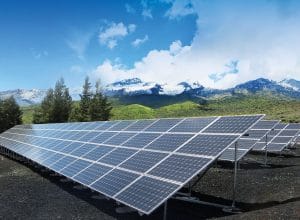Developers wrote a letter asking MNRE to address their concerns, but were left disappointed

As the government pushes to meet its target of achieving 100 GW solar capacity by 2022, it has started to increase the maximum project bid size. While the government is trying to increase scale and bring down costs, it has gone too far according to some domestic project developers.
In light of some of the recent moves by the government agencies, these developers feel that this move is eventually going to be detrimental for them and have requested to the Ministry of New and Renewable Energy (MNRE) Secretary to intervene.
Let’s take the example of two recent announcements:
The Solar Energy Corporation of India (SECI) and the National Thermal Power Corporation (NTPC) increased the maximum bidding capacity by a single bidder in their respective tenders announced in the first quarter.
In February 2018, SECI tendered 3 GW of Inter-State Transmission System (ISTS) – connected solar PV projects to be developed across the country. After tendering the capacity, a revision was made and the maximum allowable capacity for a single bidder was more than doubled to 1,800 MW from the previous maximum allowable capacity of 750 MW for a single bidder, and the minimum allowable capacity was reduced to 200 MW from the previous 250 MW.
Then in March 2018, NTPC tendered 2,000 MW of grid-connected solar PV to be developed across the country. For this tender, the minimum project capacity to bid was 50 MW and the maximum allowable capacity to bid was set at 2,000 MW for this tender.
After the revision was announced to the maximum allowable project bid size by the implementing agencies, Indian solar project developers Adani Green, Azure Power, Hero Future Energies, Mytrah Energy, ACME Solar and Sprng Energy wrote to the Ministry of New and Renewable Energy (MNRE) and SECI, requesting SECI and NTPC to keep the bidding limit for a single bidder to 600 MW.
The developers also asked to defer the bid submission of both SECI 3 GW and NTPC 2 GW tenders until the appropriate amendments were put in place.
Key Points Raised in the Letter
- Given the constraints in connectivity at ISTS where the existing transmission capacity is available, it would be difficult to get timely connectivity for such large-scale projects.
- Large-scale land acquisition is an uphill task for the bidder. Timely execution of such projects would be difficult, and the lenders may not come forward to finance such high-risk projects specifically on two counts – land and transmission infrastructure.
- Such a large bid size will prohibit some of the serious players based on financial criteria such as net worth requirement, turnover requirement, line of credit etc. Restricted competition may not provide the desired tariff levels.
- Given the current banking scenario in the country, accessing credit lines with a bank guarantee for all domestic players in such huge numbers would make them non-competitive compared to foreign players who would have an undue advantage in accessing these lines of credit.
However, the letter by the domestic developers has been ignored so far and on June 26, 2018, SECI finished accepting the technical bids for the 3 GW tender which was oversubscribed by 2.1 GW . SoftBank backed SBG Cleantech ended up bidding for the maximum allowable capacity of 1,800 MW in the technical bids announced. ACME solar submitted a technical bid for 600 MW and Renew bid for 500 MW. No other developer bid for more than 300 MW capacity.
When contacted, a high-ranking SECI official told Mercom, “We are the tender issuing authority and it is within our powers to change the provisions of the tender document. By increasing the maximum allowable capacity to bid for, we just ensured that the capacity had takers. In no way are we in violation of any laws or government rules.”
An NTPC official aware of the development told Mercom, “We are unable to fathom why the developers are agitated. If we have allowed the maximum bid capacity to be 2 GW, it means more participation. It’s not that we have increased the minimum capacity to be bid for too. Had that been done, the developers’ concerns would be understandable.”
A recent SECI tender for 2 GW of ISTS-connected grid-connected solar PV tender was oversubscribed by 1.8 GW. For this tender, the maximum capacity to bid for was 600 MW. The developers in their letter have also quoted this tender’s oversubscription as an example and asked implementing agencies to adjust the cap to 600 MW, 750 MW levels.
When contacted, an official at the MNRE said, “Yes, we have received the communication, but see no cause for any intervention. It is a fair tender, plus it is a reverse auction, so everyone has equal chance of winning a contract.”
“It looks like the government is trying increase scale and reduce costs, which is understandable. Hopefully, this is well thought out. Even projects that are a few hundred megawatts in size have had land and evacuation issues in the recent past. No matter what, increasing the project size so high will definitely close the door on smaller developers in the country. Only a handful of companies will be able to participate in these mega-tenders going forward,” said Raj Prabhu, CEO of Mercom Capital Group.
The large-scale project development landscape is already getting consolidated with large corporate conglomerates and PE-funded developers dominating the landscape. According to the Mercom Market Share Tracker, in 2017, the top 10 utility-scale project developers accounted for 62 percent of all large-scale projects developed in the country.
(Source: Mercom India)




























